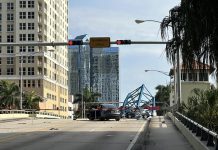By Alan Tannenbaum
In the early 80’s, Robert Crain, a well-known engineer in the condo construction defect world, was asked by HUD to opine on the anticipated useful life of condominium buildings built in Florida. His conclusion was 50 years. Especially for a number of beachfront condos built in the 1970’s, engineer Crain seems to have predicted well.
The definition of useful life that I will use for purposes of this article is the point where the cost of trying to rehabilitate a structure becomes excessive making demo and reconstruction, or even abandonment, the better business decision. The challenge with Florida condo buildings reaching the end of their useful lives is that condo associations are highly regulated, and boards and management in dealing with aging buildings are constrained under both statute and declarations of condominium.
The Duty to Repair
Pursuant to §718.113 (1), Fla. Stat., “[m]aintenance of the common elements [of a condominium] is the responsibility of the association. Declarations of condominium similarly oblige associations through their boards to repair and maintain the common elements.
An association’s shirking of its maintenance responsibility could invite a suit by an owner, pursuant to §718.303, Fla. Stat., seeking a mandatory injunction to require necessary common element repairs, a monetary award for resulting damages, and an award of attorney’s fees and costs. Both a mandatory injunction requiring repair, and monetary damages awarded to a unit owner against an association, were affirmed on appeal by the Third DCA in Coronado Condominium Association, Inc. v. Scher, 533 So. 2d. 295 (1988).
Deterioration Constituting a Material Alteration
Pursuant to §718.113 (2)(a), Fla. Stat., “. . . there shall be no material alteration of . . . the common elements” without the requisite vote of the membership as provided in the declaration of condominium, or by a vote of 75% of the membership if no percentage is set forth in the documents.
Have common elements deteriorated by years of wear, insect infestation, hurricane damage, etc., and not rehabilitated by the association back to their original condition, been materially altered as defined in §718.113(2)(a), Fla. Stat.? So thought one Tampa federal district judge sitting in an appellate capacity in In re Colony Beach & Tennis Club Association, Inc., 456 B.R. 545 (2011).
The Colony Beach & Tennis Club (“The Colony”) was (it has been torn down by order of the Town of Longboat Key) a 237-unit hotel condominium on Longboat Key. (The Colony as a footnote to history was set to accommodate President George W. Bush and his entourage the evening of 9/11.) Per the documents, control of the use of units was delegated to a management entity which ran the hotel operation. The unit owners were limited partners in the management entity, and were entitled to the use of their unit for one month a year. The condo association was obliged by the documents to maintain and repair the common elements.
The Colony operated successfully until 2006. The problem was that most of the buildings were townhouses of wood construction, and no reserves had been collected during the 30-year life of the property. In 2006, the management entity requested that the association pass a $50,000 per unit special assessment to rehabilitate the common elements and the unit interiors. The board of the association, and many of the owners, believed that the management entity should share a portion of the rehabilitation cost. The parties reached an impasse.
By 2010, the structures had deteriorated to the point where they were no longer habitable. The management entity filed for bankruptcy, and in those proceedings brought a claim against the association seeking $23 million for its loss of profits from the hotel operation. The management entity’s main argument was that the association had failed to meet its repair obligations under statute and the declaration. The bankruptcy judge found that the association had no legal obligation to the management entity to undertake the repairs.
In reversing the bankruptcy court, Federal District Court Judge Steven Merryday applied Coronado and found that the association indeed had an obligation to undertake the repairs, and its failure to do so was the proximate cause of the management entity’s losses. But Judge Merryday independently found that the abandonment of repairs by the association also represented a material alteration of the common elements:
Further, by allowing the Colony to deteriorate, the Board and the majority of the members impermissibly altered the common elements to the detriment of a minority of the members…The Condominium Act requires that “no material alteration…to the common elements [occur] except in a manner provided in the declaration…” Fla. Stat. §718.113(2)(a). “The purpose of [this] provision [is] to protect the [unit] purchaser against unanticipated changes in the common elements which could dramatically affect the cost and enjoyment associated with owning a condominium.” Wellington Prop. Mgmt. v. Parc Corniche Condo.Ass’n, Inc., 755 So.2d 824, 826 (Fla. 5th DCA 2000). Deterioration of the common elements is an “alteration” and a “change” against which the Condominium Act protects the members who favor repairing the common elements.
Id. at 563.
Deterioration affecting insurability
Pursuant to Florida Statute §718.111(11)(a), a condo association is required to insure the common elements for the “replacement cost of the insured property as determined by an independent insurance appraisal or update of a prior appraisal.” “Replacement cost coverage” means coverage for the full cost of repairing and/or replacing damaged property without deduction for depreciation. Most declarations also make it mandatory that the association secure adequate insurance coverage for the common elements.
It is typical upon renewal for property insurance for carriers to inspect the property and require repairs as a condition of renewal. Applications for new coverage or renewal also carry an affirmative obligation on the insured to report any conditions at the property which would create enhanced risk for the carrier. The failure of associations to rehabilitate aging buildings can lead to the rejection of coverage, or denial of a claim due to non-disclosure of known defects in the buildings at time of application.
The Fact that Rehabilitation is Costly is No Excuse
Many older associations lack adequate reserves. Deferred maintenance may have also been neglected. Then, major damage may be discovered, sometimes when a new owner is renovating a unit. The board then conducts an engineering investigation and gets the bad news that major and very costly work is required. Often, when repairs begin and the building is opened up, the full extent of the problems are revealed and the cost to rehabilitate the buildings correctly becomes exorbitant.
Boards then often try to get away with a scaled-down project which merely “puts the thumb in the proverbial dike.” Based upon the statutory mandate, the language of most declarations and established case law, this won’t cut it. So, for boards to be compliant, it’s either pass a special assessment that may be tens of thousands of dollars a unit, or consider termination.
Voluntary termination as an alternative to major repairs
The author is aware of an older condominium in Tampa where the units sold for $35,000 to $75,000, there had been little deferred maintenance performed, reserves were woefully inadequate and necessary repairs were to cost $30,000 a unit, a figure that most of the owners could not afford. At the same time, the land upon which the condominium sat was very valuable, like $300,000 a unit valuable. The Board took a serious look at termination as an alternative to trying to collect a huge special assessment.
Although termination may be an attractive alternative under these circumstances, voluntary termination is not easy to achieve. Voluntary termination of a condominium in Florida is governed by §718.117, Fla. Stat. It is not the author’s intent in this article to unwind what is a very complex statute, rather it is to focus on the elements of the statute which render termination quite difficult and expensive to achieve. These are the major challenges in successfully initiating and completing a voluntary termination under §718.117, Fla. Stat.
- A detailed, formal plan of termination must be created by the Board;
- A high percentage of the membership must vote to terminate;
- In an optional termination, which is the alternative that most groups would be limited to, 5% of the membership can block the termination;
- Mortgage holders can object to the plan under certain circumstances;
- The proposed allocation of proceeds of the sale of the condominium property is subject to legal challenge by any owner, which could tie up the termination for years;
- There are multiple layers of costs which must be paid before the proceeds are distributed to the owners; and
- The association is not excused from its repair obligations while termination is attempted.
As far as the Tampa group mentioned above, despite it being painfully obvious that termination was the far more logical solution to the association’s predicament, more than 5% of the membership made it clear that they would block the termination, so it never got off the ground.
Involuntary termination
There is a little known, short provision of the Florida Condominium Act which provides for the possibility of the involuntary termination of a condominium.
“718.118 Equitable relief.—In the event of substantial damage to or destruction of all or a substantial part of the condominium property, and if the property is not repaired, reconstructed, or rebuilt within a reasonable period of time, any unit owner may petition a court for equitable relief, which may include a termination of the condominium and a partition.”
At first glance, it would appear that the statute was intended to cover board inaction in the wake of damage from a catastrophic weather event or fire. However, the possibility certainly exists that a creative unit owner could try to utilize the statute to seek the involuntary termination of a condominium where the condo buildings had been “damaged” as a result of long–term wear and tear, and there was a sufficient minority of the membership who would not support voluntary termination. Such was the case with The Colony.
A developer purchased a portion of The Colony which was the subject of a recreational lease. The developer then purchased several units, creating standing for itself as a unit owner aggrieved by board non-action on repairs. The developer proceeded to bring an action under §718.118, Fla. Stat. seeking involuntary termination. Unicorp Colony Units, LLC v. Colony Beach & Tennis Club Association, Inc. et al, Case No. 2018-CA-000360, Circuit Court for Sarasota County. All unit owners opposed to voluntary termination were sued.
The trial court in the Unicorp Colony Units, LLC action has ruled that the statute does apply to long-term wear and tear, and terminated the condominium. The battle presently is by what method the condominium property will be sold, how the rights of the contesting owners will be protected, and whether the other protections of §718.117, Fla. Stat., including the right to contest the net proceed distribution plan, will be adopted by the trial court.
Conclusion
Something has to give, as the challenges for aging condominium will only increase as the buildings continue to deteriorate. Associations administering older condominiums face significant risks by not either taking on major rehabilitation projects, or leading an effort to terminate. Of course, since repair obligations continue during what may be a lengthy termination effort, scrapping necessary repair efforts in deference to termination carries its own risks. Will municipalities and counties be asked to step in, as the Town of Longboat Key was with The Colony, to condemn buildings to get associations out of the repair dilemma while termination is attempted? Will more developers and speculators purchase units in bulk in older condominiums sitting on valuable property and follow Unicorp Colony Unit, LLC’s lead in seeking involuntary termination in order to gain ultimate ownership of the underlying property? It should prove to be an interesting ride.

Reprinted with permission. Do you have questions or comments? Please feel free to contact Alan Tannenbaum at atannenbaum@tannenbaumscro.com or call (941) 316.0111.







